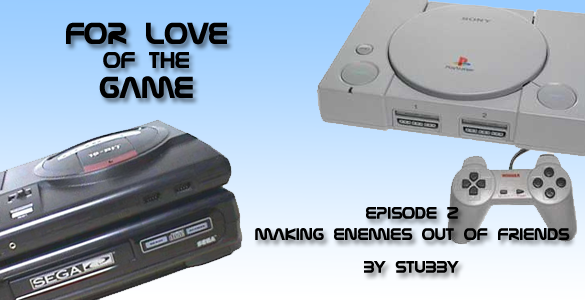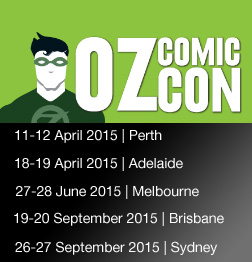My all time favourite video game industry story starts with the 2 major video game heavyweights of the late 1980’s and early 1990’s, Sega and Nintendo. Sega, back in the day when they actually made consoles, were quite a gutsy and ambitious bunch. They were the first to bring an 8-bit console to the home market (Master System), the first to the 16-bit war (Megadrive/Genesis) but their major accolade was that they were the first to incorporate CDs as a game storage platform.
Now you must keep in mind that even PC games weren’t widespread in CD form at this time. In fact, sound cards were just starting to come about. Even before VIDEO CARDS existed! So for a company to spend tens of thousands of dollars for research and development towards an add-on to an already successful console would seem ludicrous but that’s exactly what Sega did.
At this time in their life, Nintendo, nowadays hailed as the innovators of modern gaming, were quite reserved in their approach to new territories. It seemed that they watched what Sega did and, if it was successful, they’d copy it but add something extra. Sega released the Master System, 6 months later Nintendo brings out the NES with an extended colour palette making the graphics better. Megadrive comes out, SNES gets released with a 6 button controller as a standard and a far superior sound chip (check out Donkey Kong Country’s soundtrack for proof). And when Sega announced their plans for a CD add-on for the Megadrive, Nintendo started their research into their own “superCD”.
Sega released their megaCD to almost instant shunning and it did kinda deserve it. Most of the games released on the system were, essentially, rolling videos that required the player to press the right button at the right time to keep the video going. Think of the God of War quick time events made into a whole game….. riveting, I assure you. Not only that but the video never ran at full screen and the resolution was crayon and paper-like low bit rate. We noticed this, even back then. There were a few truly shining moments that included SonicCD, Snatcher and Spiderman vs Kingpin but they were few and far between. Needless to say the MegaCD was a flop with an estimated 11% of all Megadrive users buying the add-on. Later, Sega would make a last ditch effort to increase the processing power to make the video playback more impressive with the 32X…. but the story of that failure will come another time.
So Nintendo watched as Sega lost tens of thousands of dollars every month with it’s abomination and made both the best and worst decision of their lives. They officially dropped the project and severed ties with the companies asked to the table to create the SuperCD. The first company was Phillips. They were to supply the discs and pressing facilities to make the games but the company in charge of the units actual hardware… was Sony.
The SuperCD was going to use a piggy-back system where the SNES sat on top of the unit and if you check under any SNES console, you will find the port intended for this. I remember articles in old Nintendo magazines on interviews with Sony representatives expressing their excitement for the project. They talked about how the SuperCD wasn’t going to just be an add-on for larger game storage that would still run through the old systems hardware, like the poor MegaCD does, but that it would have it’s own dedicated graphics chipset and CPU and that they were expecting it to hit 32bit. Sound familiar? Read on…
The severing of the contracts led to some divorce settlements. Phillips were given rights to some of Nintendo’s first party properties which led to “Hotel Mario” and “Zelda CD” being released on phillips’ console, the CD-i. Don’t bother hunting them down, they are pretty crap. Sony, however, opted to keep all rights for the hardware they created and with a smattering of spite and lust for revenge, hey presto, 3 years later….
The Sony Playstation was born.
Nintendo had, in essence, created their own biggest competitor and over only a few short years, Sony began outselling and out performing them. The biggest show of this is how Sony won over Nintendo to have Final Fantasy VII from Squaresoft made for Playstation because of the storage limitations of cartridges. Also, Sony didn’t have a strict quality or censorship control over titles released for the system like Nintendo did, leading to huge partnerships that led to Tekken, Ridge Racer and Crash Bandicoot along with many others. It wouldn’t be until the success of the Wii, some 10 years later, that Nintendo would take back the lead.
It’s the greatest story never told but all the pieces are there if you look hard enough. And then the “ what if “ scenarios! What if Nintendo kept to the project? Would we have the Nintendo Playstation? Maybe the Sony Gamecube? Would Nintendo be at the forefront with a high definition console with Blu-Ray playback, motion controls and Mario vs Crash Bandicoot? Then you can think of the consequences of other companies. Would Final Fantasy be as big as it is today? Because Sony was the reason that FFVII even came to the western world. If Nintendo was in charge, it may have stayed in Japan (at that point, only 3 Final Fantasy games out of 7 had English releases). Would Sega be a current console maker to this day if they didn’t have to compete with the PS2 that led to the demise of the Dreamcast?
Personally, I love the speculation game!
So if you’re pissed off when you hear someone say the PS3 is better than the Wii, you can tell them that they wouldn’t have their PS3 if it wasn’t for Nintendo.
– Grant










